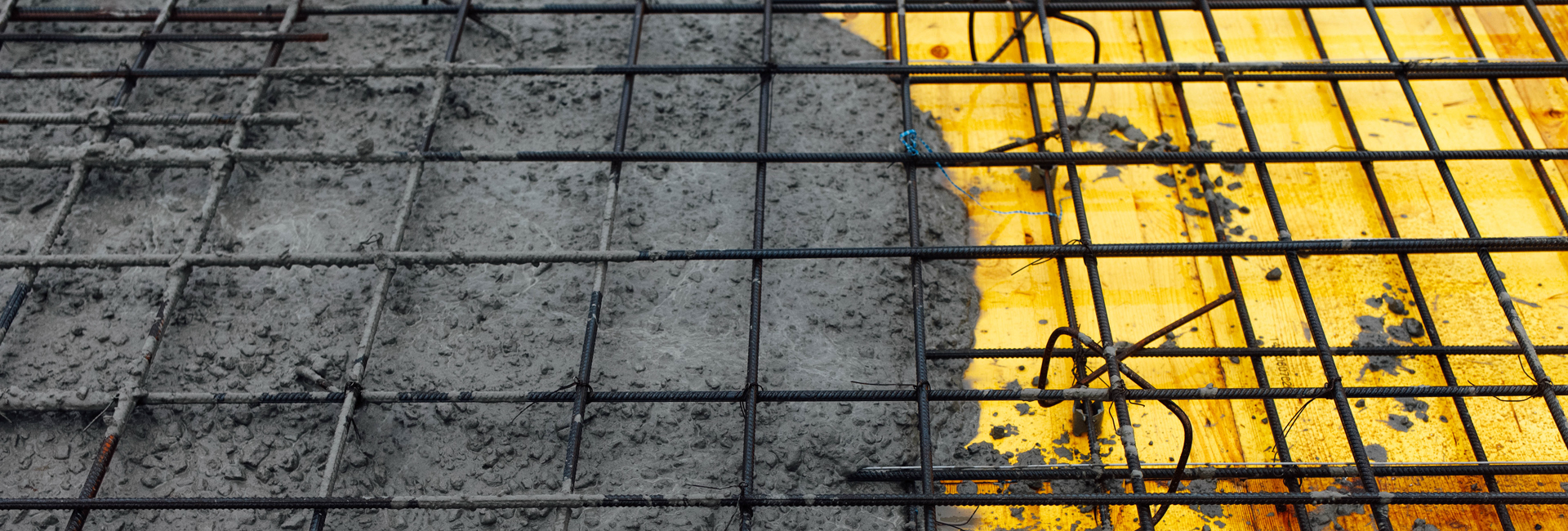The strength and durability of a building structure are heavily influenced by the materials used and their proper application. Among the key components in construction are cement and TMT (Thermo-Mechanically Treated) bars. Understanding how these materials contribute to the strength of a structure involves exploring their properties, the principles behind their use, and their interaction in concrete construction.
|
Table of Content
|
1. Cement: The Foundation of Concrete Strength
Composition and Types:
Cement is a fine powder made from limestone, clay, shells, and silica. It is a key ingredient in concrete, which is a composite material used in construction. The most commonly used type of cement is Ordinary Portland Cement (OPC), though there are various types including Portland Pozzolana Cement (PPC) and Sulphate Resisting Cement (SRC) depending on specific requirements.
Hydration Process:
When mixed with water, cement undergoes a chemical reaction called hydration. This process involves the formation of calcium silicate hydrate (C-S-H) and calcium hydroxide. The C-S-H gel is responsible for the strength and stability of the concrete, as it binds the aggregate particles together, while calcium hydroxide helps in further hydration processes.
Concrete Strength:
The strength of concrete is determined by its compressive strength, which is the ability of the concrete to withstand axial loads without failing. This strength is influenced by the cement-to-water ratio. Too much water can weaken the concrete, while too little water can prevent proper hydration. The standard practice is to use a mix ratio that ensures the optimal strength for the intended use.
2. TMT Bars: Reinforcing the Structure
Manufacturing Process:
TMT bars are high-strength deformed bars used as reinforcement in concrete structures. They are made from steel billets or blooms that undergo a thermo-mechanical treatment process. This process involves heating the steel to a high temperature and then rapidly cooling it, which imparts a hard outer layer and a softer, more ductile core.
Properties of TMT Bars:
- High Strength: The outer layer of TMT bars is hard and strong, which helps in resisting tensile forces. The core remains ductile, allowing the bars to withstand significant stress without breaking.
- Ductility: The inner core’s ductility ensures that the bars can bend and stretch without fracturing, which is crucial for earthquake-resistant structures.
- Corrosion Resistance: TMT bars often have better resistance to corrosion compared to traditional bars, thanks to their surface treatment and the properties imparted during the manufacturing process.
Role in Concrete Structures:
TMT bars provide tensile strength to concrete structures, which are inherently strong in compression but weak in tension. When embedded in concrete, TMT bars help in resisting tensile forces and cracking, thus ensuring the overall stability and strength of the structure.
3. Concrete Structure: Combining Cement and TMT Bars
Reinforced Concrete:
Concrete is strong in compression but weak in tension. To overcome this limitation, TMT bars are embedded within concrete to create a composite material known as reinforced concrete. Combining concrete and TMT bars results in a material that can withstand compressive and tensile forces.
Load Distribution:
In a reinforced concrete structure, the concrete handles the compressive loads, while the TMT bars handle the tensile loads. This distribution of loads ensures that the structure can support greater weights and resist various forces without failing.
Bonding and Adhesion:
For a structure to be strong, it is essential that the TMT bars and concrete bond well together. The rough surface of TMT bars provides better adhesion with concrete, which is crucial for transferring loads effectively between the two materials. Proper curing of concrete is also vital to ensure this bonding and achieve the desired strength.
4. Structural Design and Construction Practices
Mix Design:
The design of the concrete mix is critical for the strength of the structure. Engineers use mix design calculations to determine the appropriate proportions of cement, sand, aggregate, and water. This design ensures that the concrete has the desired properties, including strength, workability, and durability.
Reinforcement Placement:
The placement of TMT bars within the concrete is done according to specific structural requirements. Bars are placed in positions where tensile stresses are expected to be highest. Proper spacing, alignment, and anchoring of the bars are crucial to ensure that the structure can handle the applied loads effectively.
Curing and Quality Control:
Once the concrete is poured and the TMT bars are in place, proper curing is essential to achieve the desired strength. Curing involves keeping the concrete moist to allow complete hydration of the cement. Quality control measures, including regular testing of concrete and steel, ensure that the materials meet the required standards and specifications.
Construction Techniques:
Modern construction techniques, such as the use of formwork, scaffolding, and vibration, play a significant role in ensuring the strength of the structure. Formwork holds the concrete in place while it sets, and vibration helps to remove air bubbles and ensure proper compaction.
5. Structural Performance and Safety
Structural Integrity:
The combination of cement and TMT bars in concrete structures results in a material with high structural integrity. Properly designed and constructed reinforced concrete structures can withstand various stresses and loads, including those from environmental factors such as wind, earthquakes, and thermal expansion.
Durability and Maintenance:
Reinforced concrete structures are designed to be durable and require minimal maintenance. The combination of concrete’s resistance to weathering and TMT bars’ resistance to corrosion contributes to the long-term performance of the structure. Regular inspections and maintenance are still essential to address any potential issues and ensure the continued safety of the structure.
Failure Modes:
Understanding potential failure modes, such as bending, shear, and buckling, is important for designing safe structures. Engineers use principles of structural analysis to predict and mitigate these failure modes, ensuring that the structure remains stable under various loading conditions.
Also read: Ultimate Guide to Coarse Aggregate in Concrete Construction
Conclusion
The strength of a cement and TMT bar structure is the result of the synergistic properties of both materials. Cement provides compressive strength through its hydration process, while TMT bars offer tensile strength and flexibility. When combined in reinforced concrete, these materials create a robust and durable construction that can support significant loads and resist various stresses.
Proper mix design, reinforcement placement, and construction practices are essential for achieving the desired strength and performance of the structure. By understanding and applying these principles, engineers, and builders can create structures that are not only strong and reliable but also safe and long-lasting.
For more information, please reach out to us at: Sales@sreemetaliks.com

